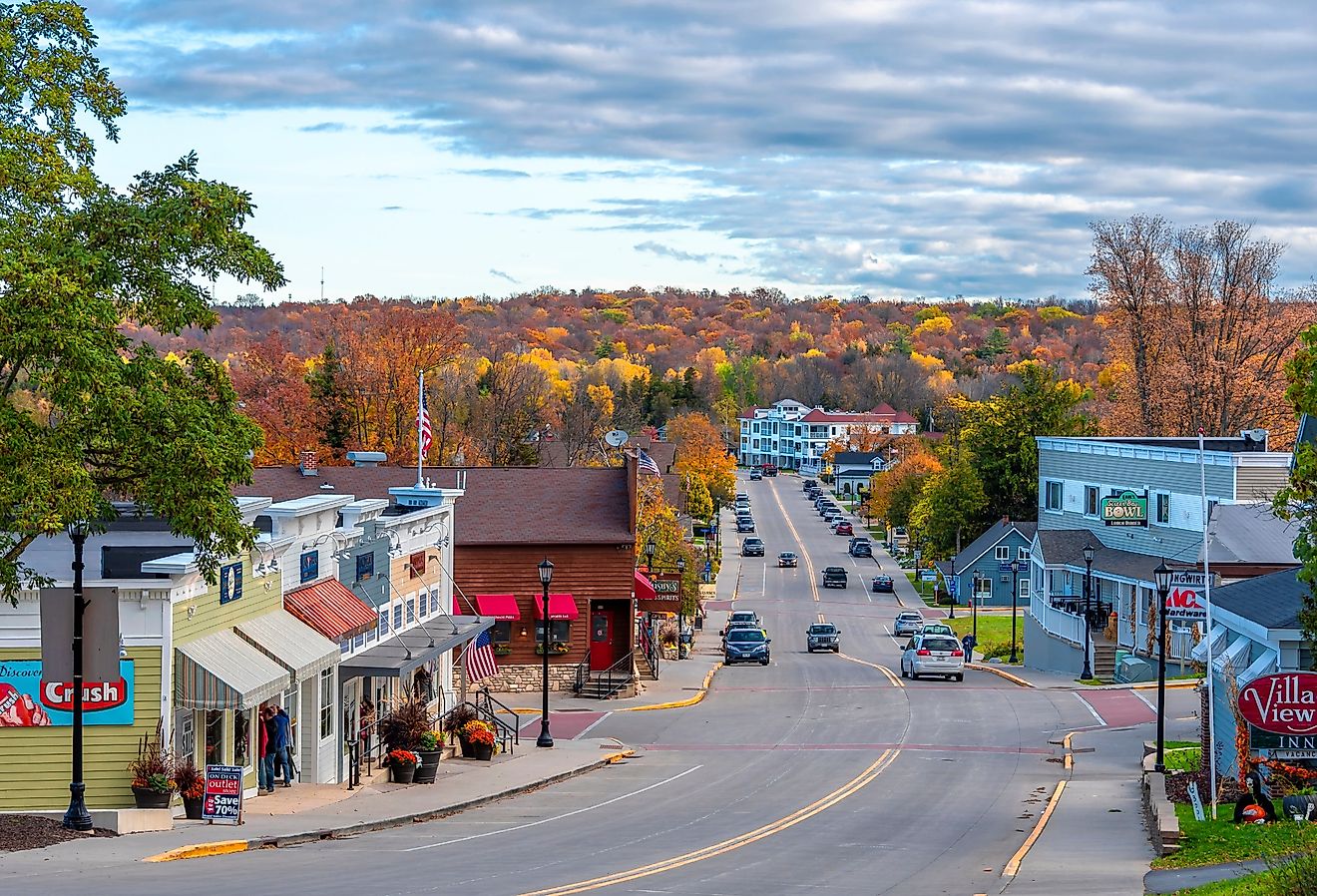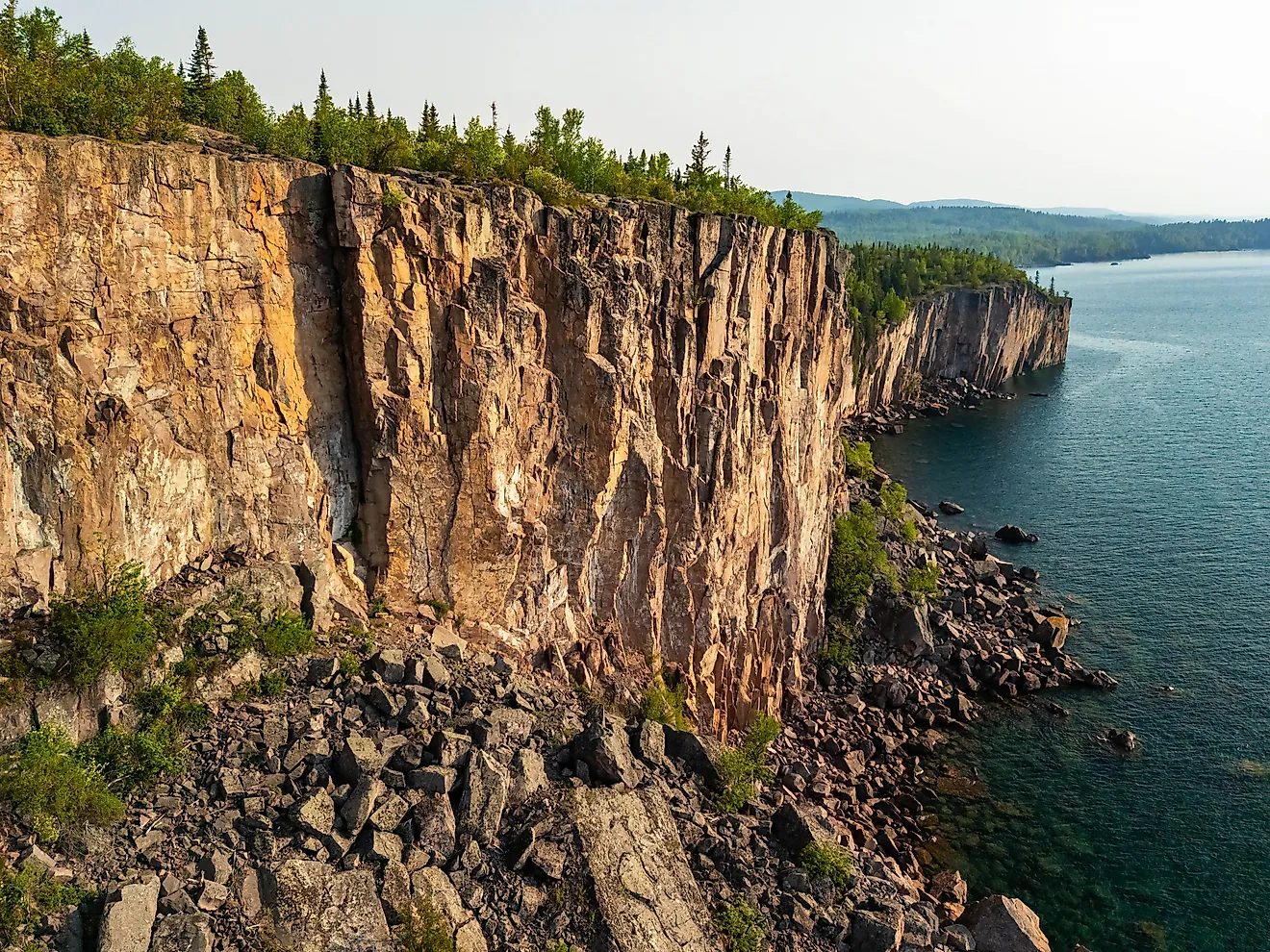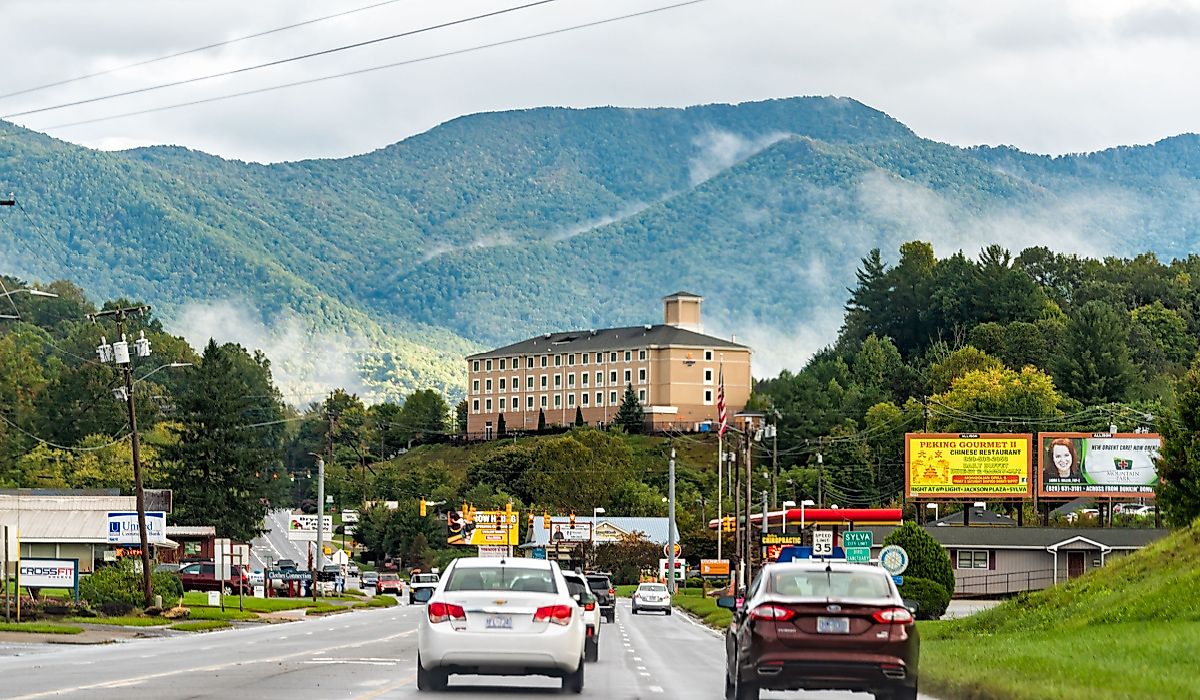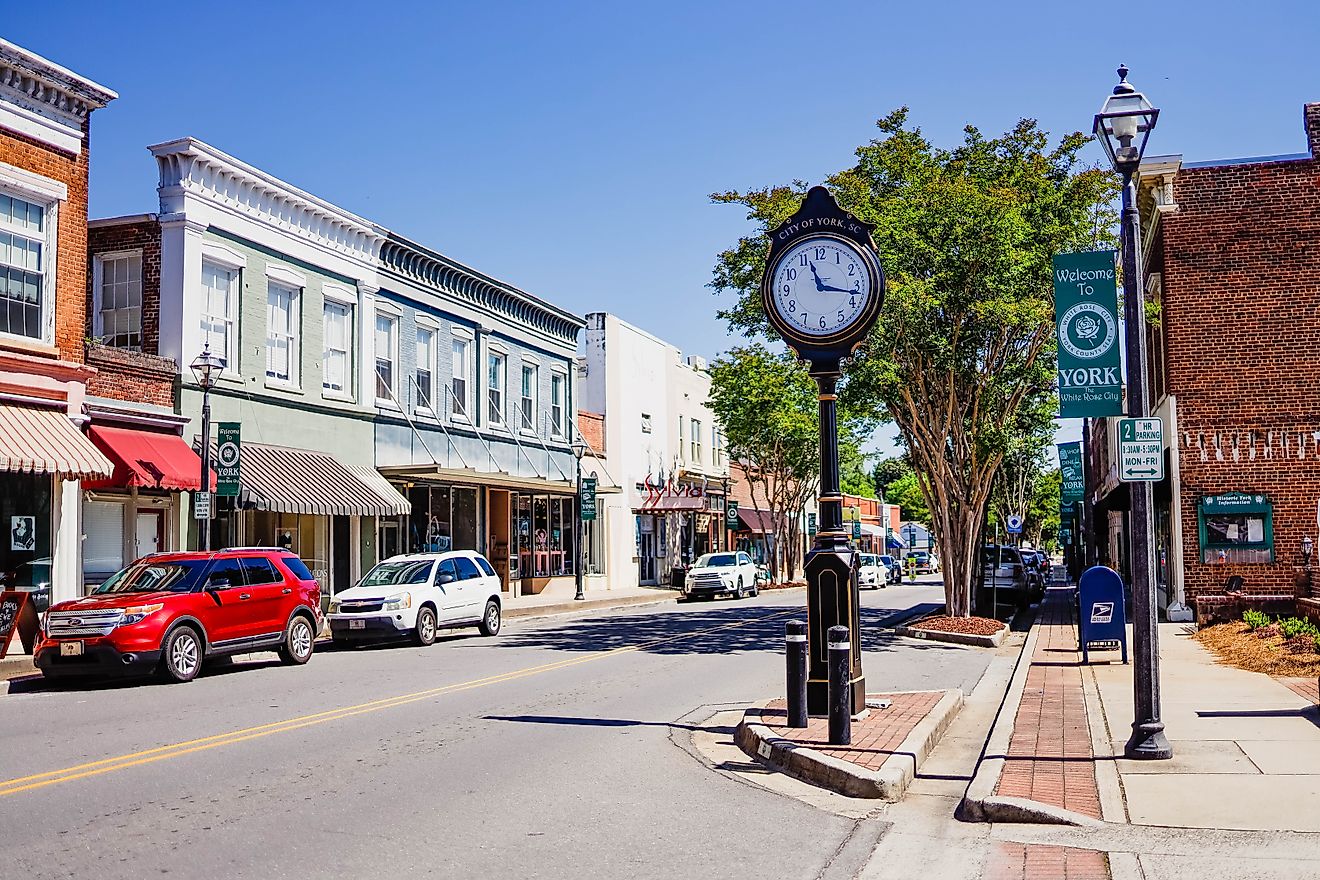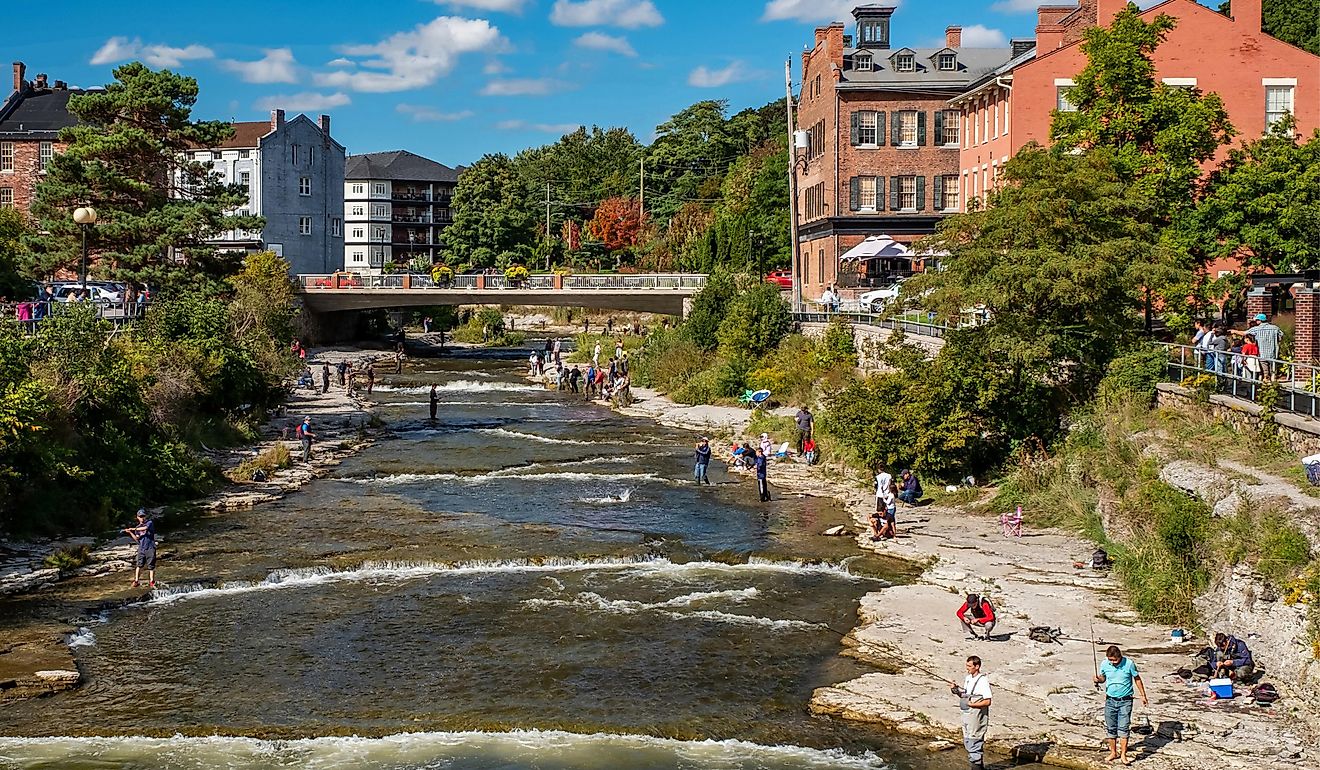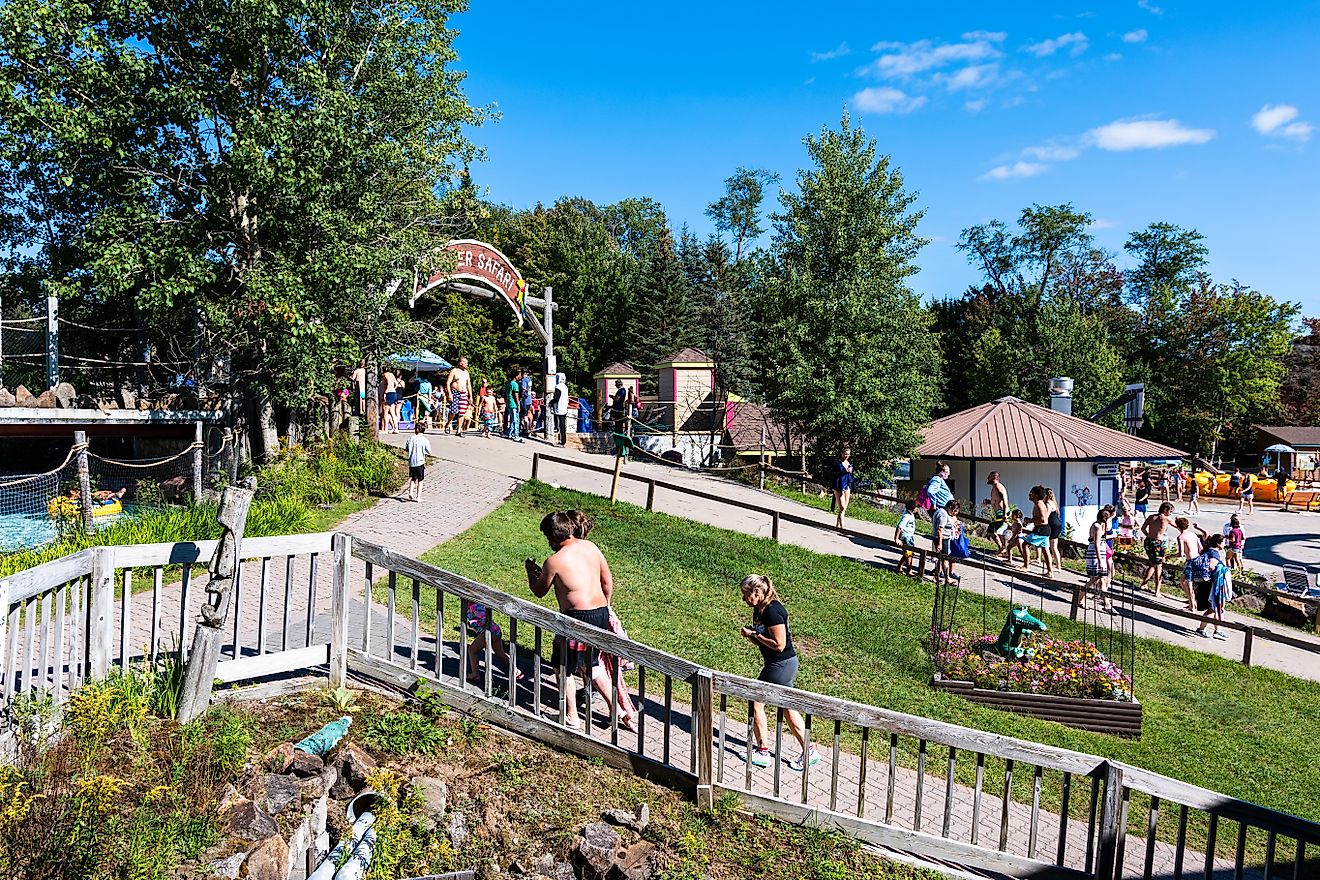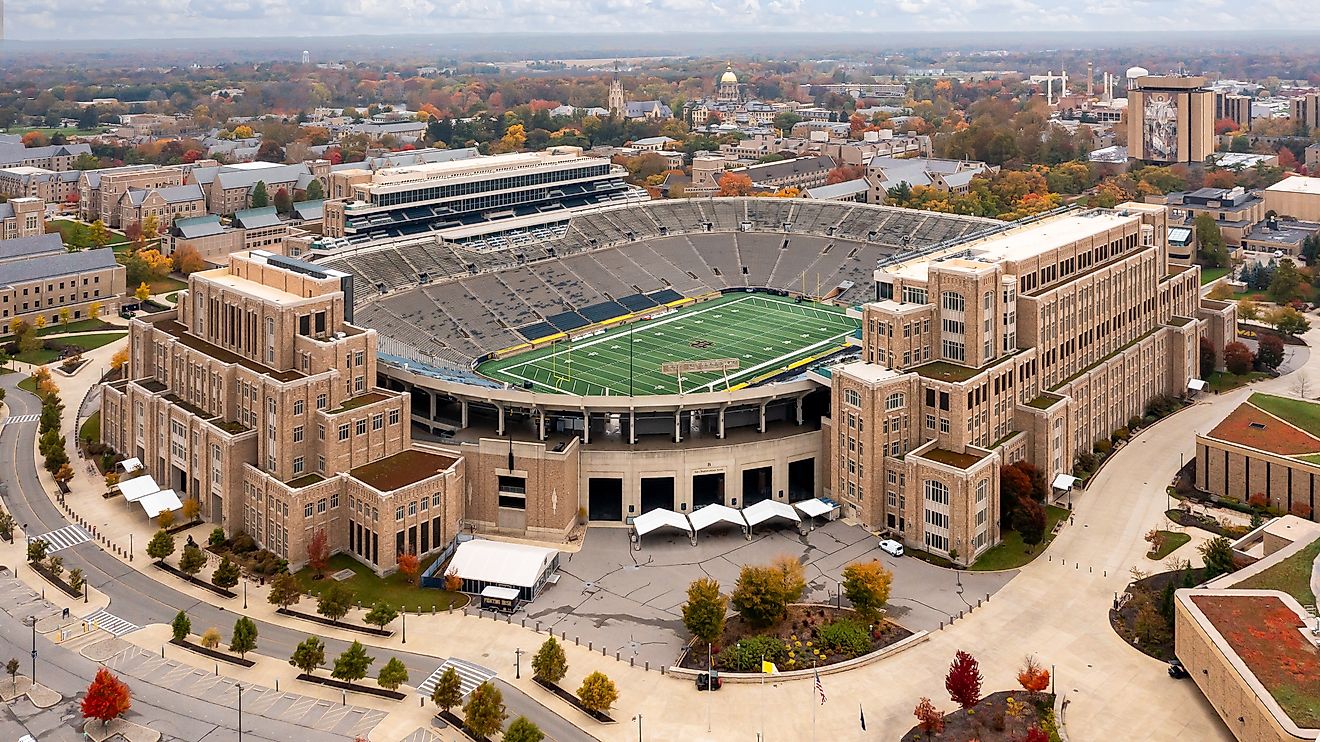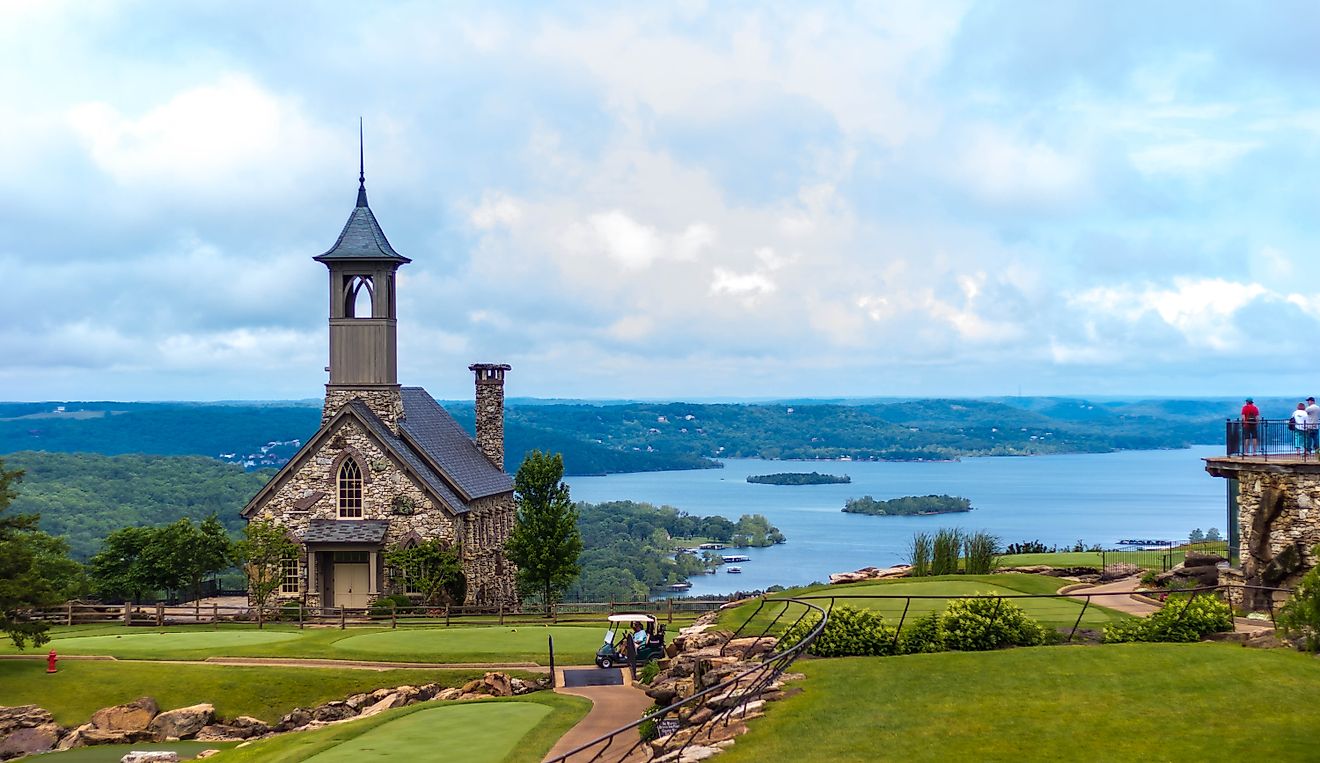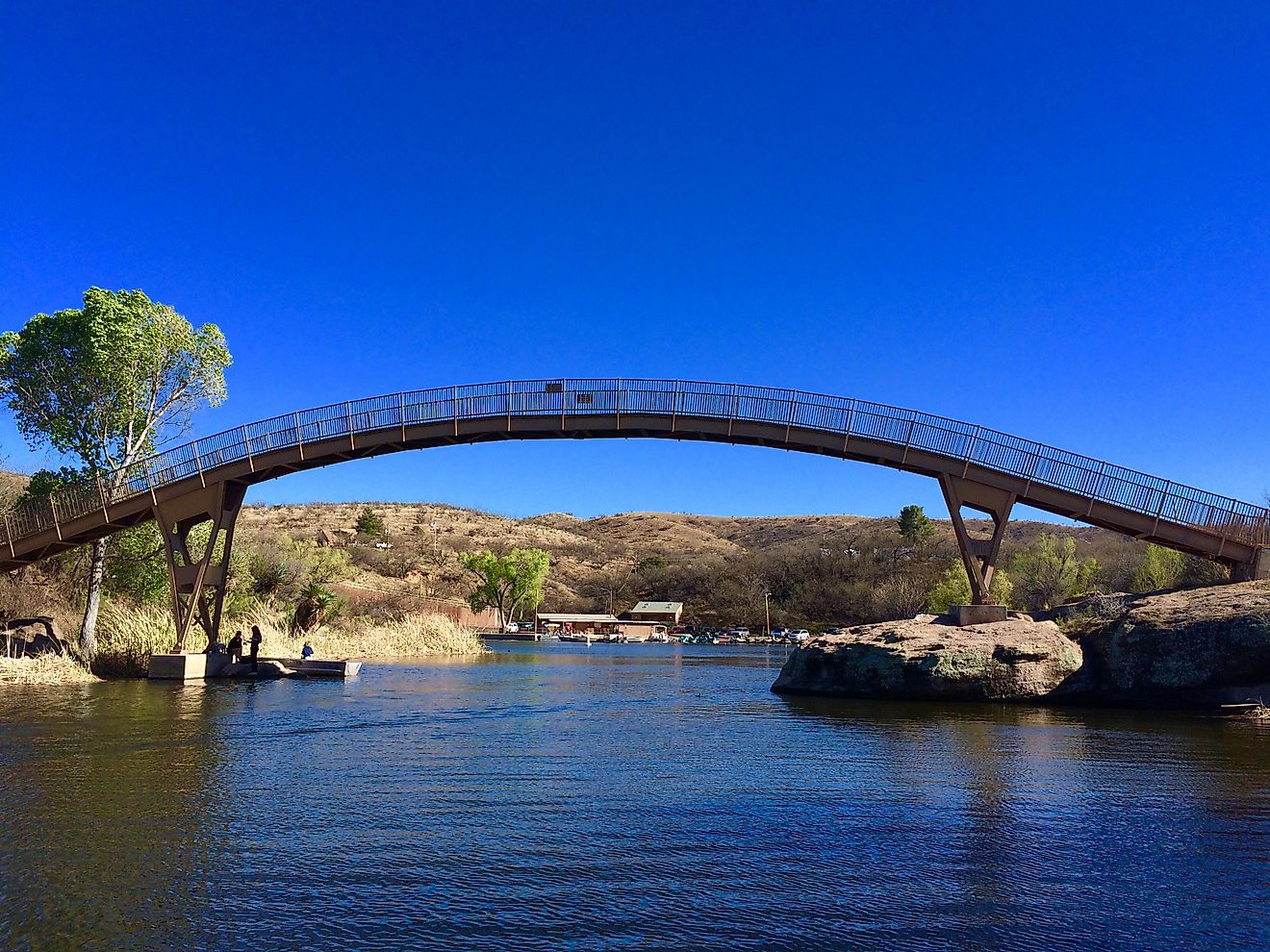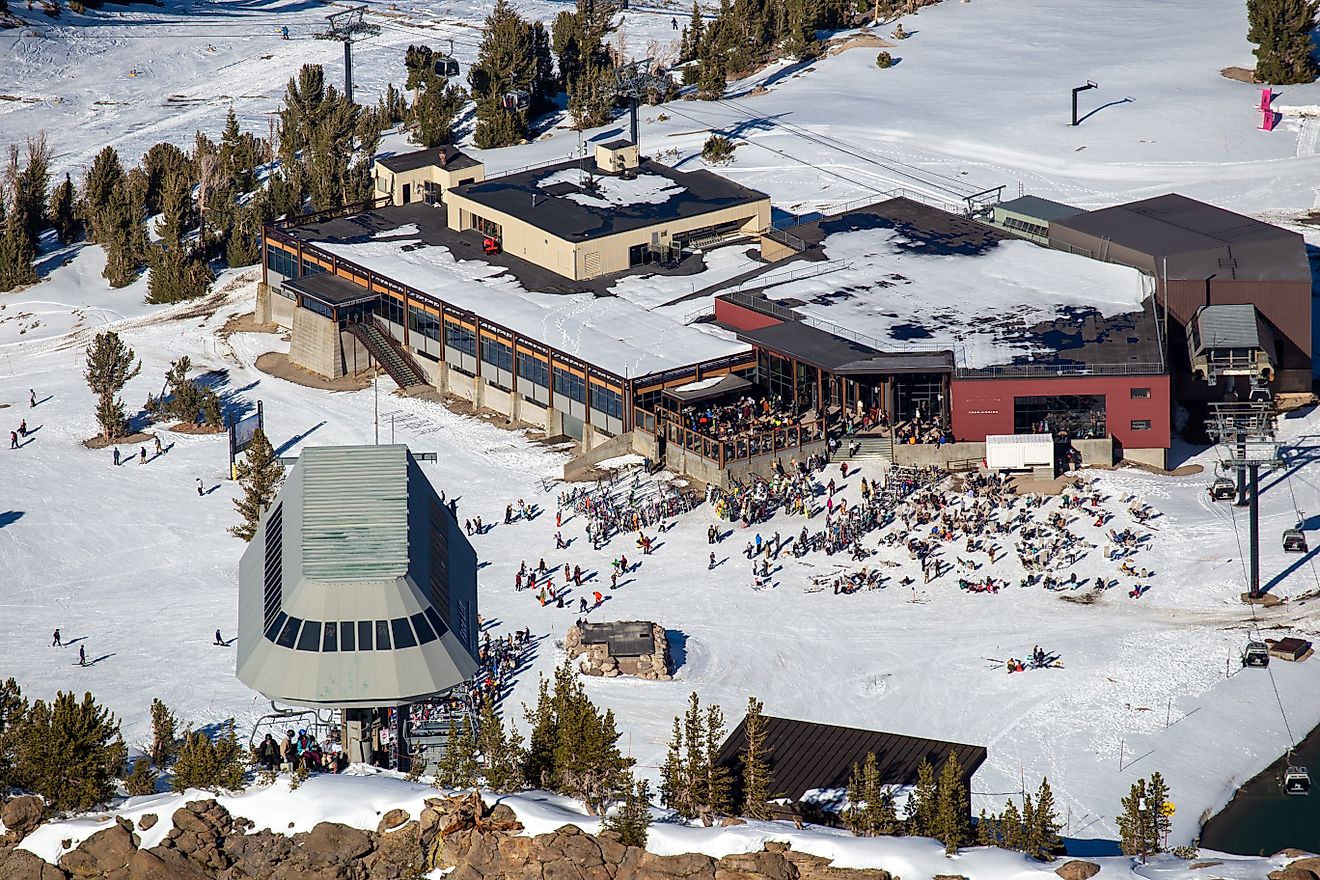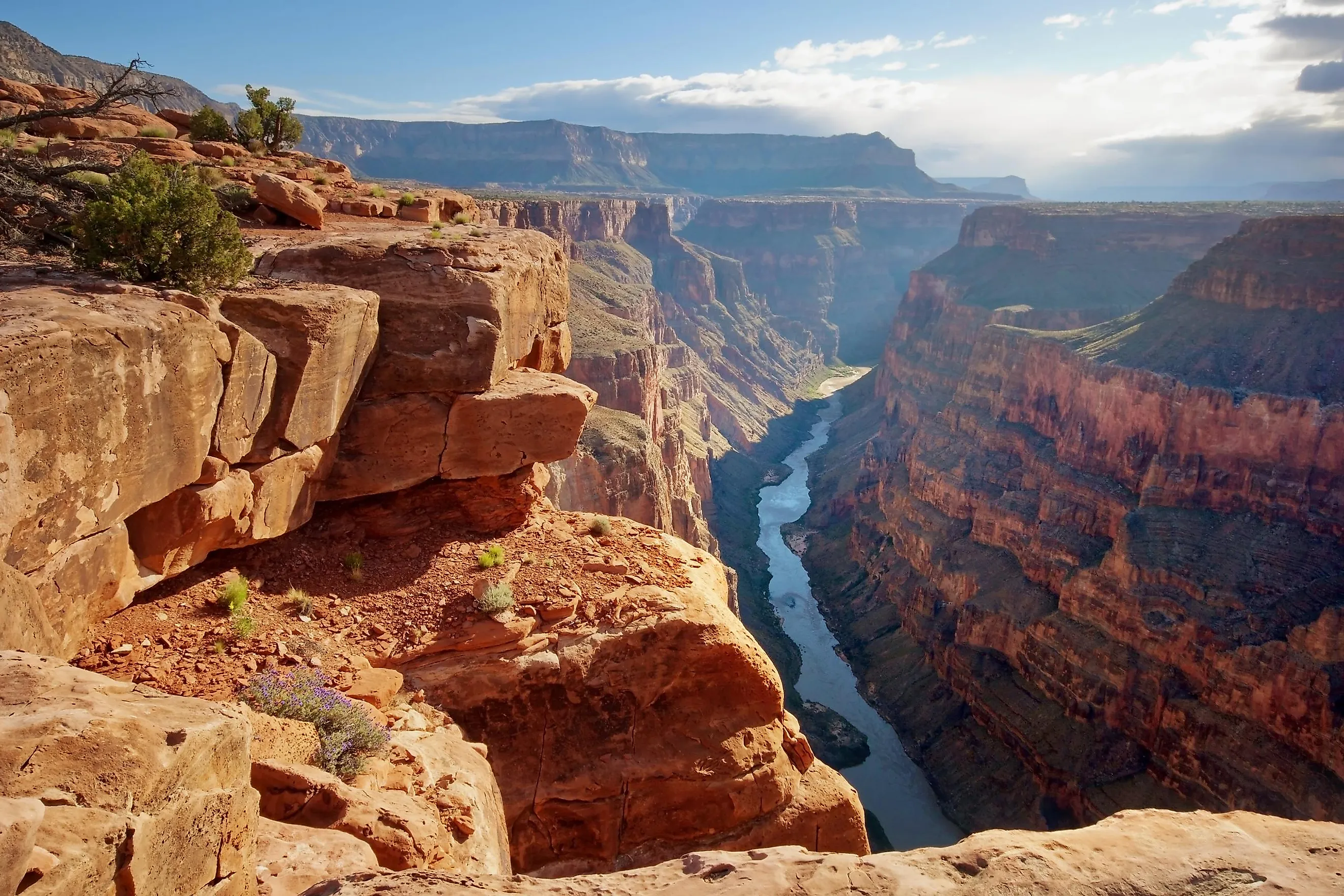
Grand Canyon National Park
National Parks are areas that are recognized for their immense natural beauty, diverse ecosystems, and unique geological formations. There are a total of 63 National Parks in the United States that are currently managed by the National Park Service (NPS), an organ of the US Department of Interior. The National Park Service not only oversees the protection of the National Parks, but it also protects all the other natural and historical heritage sites in the United States.
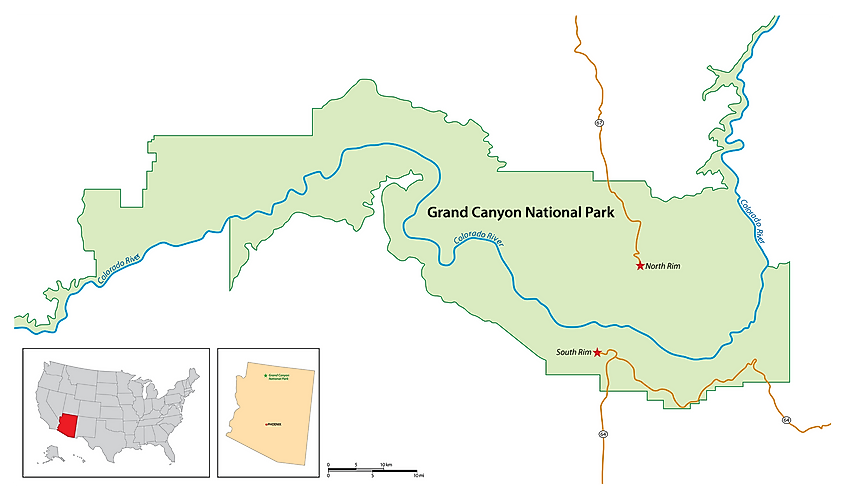
The State of Arizona covers an area of 295,233 km2 and is located in the southwestern region of the United States. Situated in the extreme northwestern corner of Arizona is the Grand Canyon National Park. The park occupies an area of 4,926.08 km2 and supports a vast array of stunning landscapes which are spread across the counties of Mohave and Coconino. The Grand Canyon National Park serves as an important tourist destination in the US and attracts millions of tourists every year.
Geography
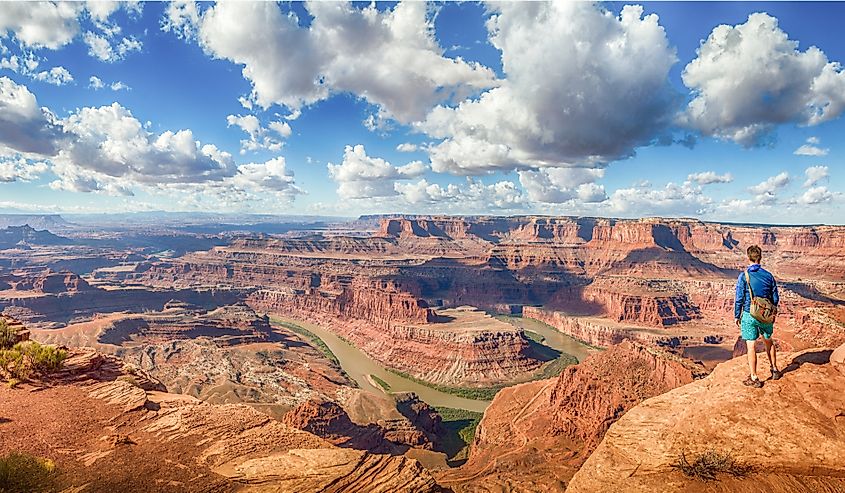
The central feature of the Grand Canyon National Park is the Grand Canyon gorge, which was created by the Colorado River through continuous weathering and geological processes over time. The Grand Canyon is widely known throughout the world for its size and colorful landscape, It has a length of about 446 km, a width of 29 km, and a maximum depth of 1,857 m. Geological studies have revealed that the Grand Canyon began to form over 70 million years ago when the Colorado Plateau started to rise because of the action of colliding tectonic plates. About 6 million years ago, the Colorado River started to carve its way downwards and helped to form the features of the Grand Canyon that we see today.
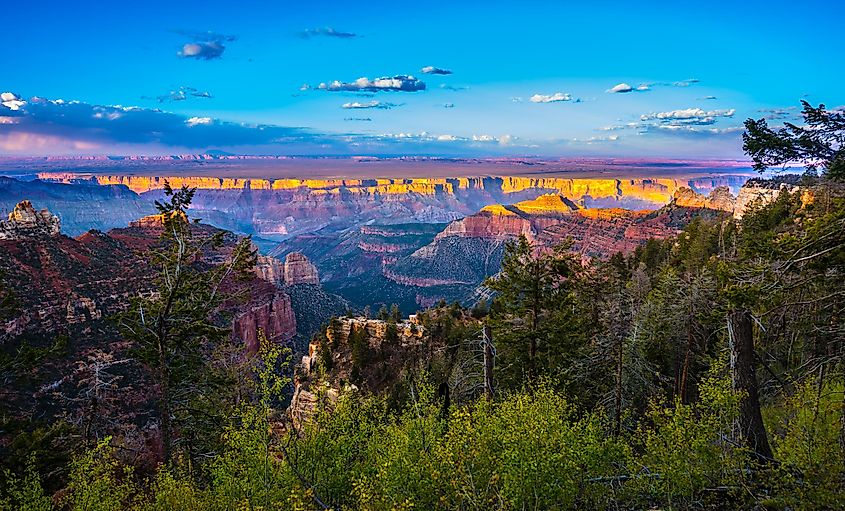
Due to its massive size and difference in elevation, the Grand Canyon National Park is separated into two distinct parts: the North Rim and the South Rim. Situated at an elevation of more than 2,529 m, the North Rim area of the National Park encompasses the canyon's northern side. It is accessible only via the 69.8 km long Arizona State Route 67 highway. Some of the major viewpoints in the North Rim include the Bright Angel Point, Roosevelt Point, Cape Royal, and Point Imperial. Many different hiking trails are also used by the visitors such as the North Kaibab Trail, Uncle Jim’s Trail, and Widforss Trail. Due to heavy snowfall, the North Rim remains closed from December 1 to May 15 every year.
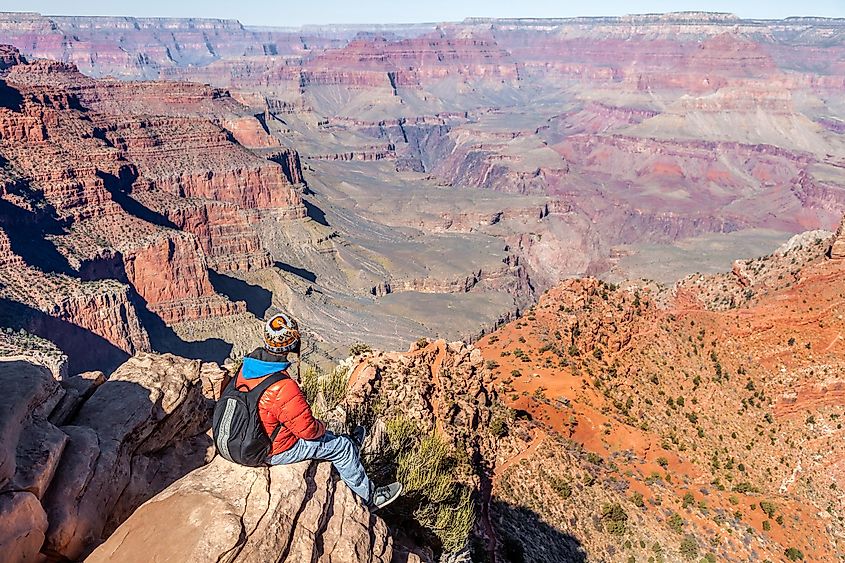
The South Rim is the most accessible and the most visited part of the Grand Canyon. There are numerous viewpoints along the South Rim and each one of them offers a spectacular view. Hermit Road, Desert View Drive, and Grand Canyon Village are the three sections of the South Rim. Some of the notable viewpoints in the Grand Canyon Village section are Ooh Aah Point, Yaki Point, Yavapai Point, and Mather Point. Pima Point, Powell Point, and Mohave Point are some of the major viewpoints that are located in the Hermit Road section. The Grand View Point, Desert View Point, Moran Point, and Shoshone Point are some of the major viewpoints in the Desert View Drive section of the South Rim. The South Rim remains open throughout the year.
Both the North and South Rims of the Grand Canyon National Park experience all four seasons throughout the year, but the climate greatly varies depending upon the situation. Due to its location at a higher elevation, the North Rim is comparatively much cooler than the South Rim and also receives a higher level of precipitation. During the summer months, the Grand Canyon faces thunderstorms, lightning, flash floods, and strong winds. In winter, the North Rim receives heavy snowfall.
Wildlife
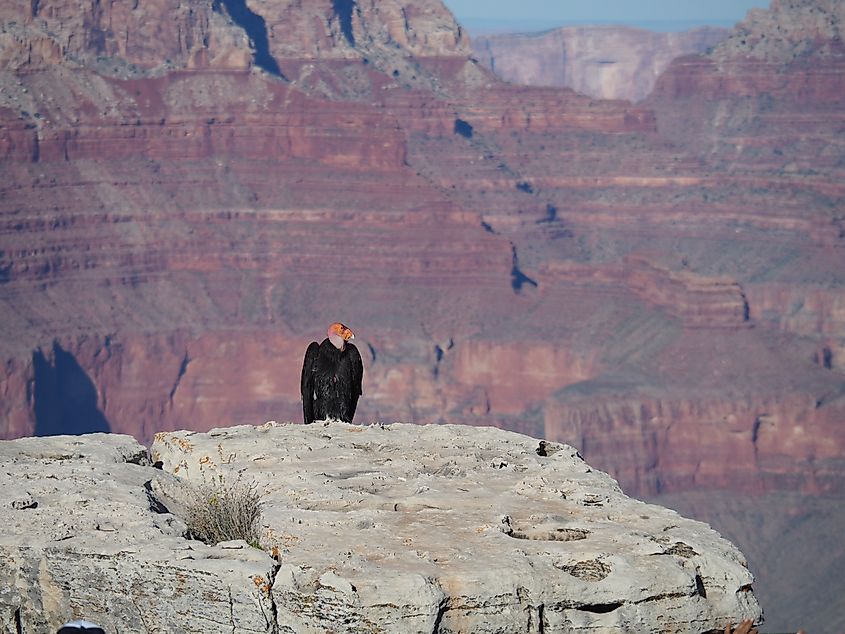
The Grand Canyon consists of several major ecosystems which in turn support many rare and endemic floral and faunal species. The Grand Canyon National Park hosts over 1,700 known vascular plant species, 195 species of lichen, 167 species of fungi, and 64 species of moss. There are also dozens of endemic plants that are only known within the boundaries of the National Park. 63 of these endemic plants have been granted special status by the US Fish and Wildlife Service. About 129 vegetation communities including riparian, desert scrub, pinyon-juniper woodland, ponderosa pine forest, and subalpine grassland communities are also found in the Grand Canyon National Park.
About 1,443 species of invertebrates have been recorded from the Grand Canyon National Park. Some of the notable invertebrate species include the Arizona bark scorpion, black widow spider, two-tailed swallowtail butterfly, Weidemeyer’s Admiral, darkling beetle, tarantula, and tarantula hawk.
About eight species of amphibians such as the canyon tree frog, northern leopard frog, tiger salamander, Woodhouse's toad, and red-spotted toad are found in the National Park.
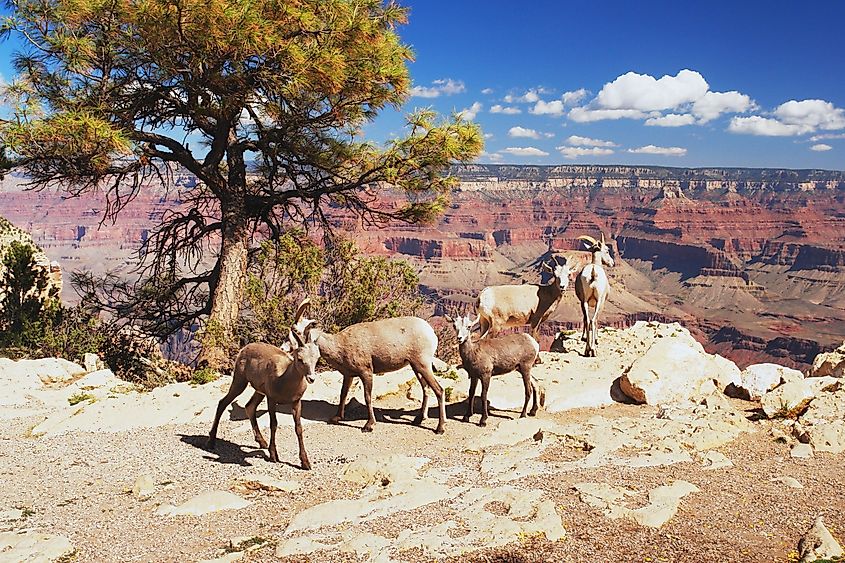
About 48 species of reptiles including the greater (mountain) short-horned lizard, eastern collared lizard, chuckwalla lizard, Grand Canyon rattlesnake, Gila monster, gopher snake, desert night snake, and the Sonoran lyre snake are found in the Canyonlands National Park.
Due to its wide variety of ecosystems, the Grand Canyon National Park has been designated as a Globally Important Bird Area that provides support to over 450 avian species. Some of the important birds that are found here include the California condor, peregrine falcon, Mexican spotted owl, Yuma clapper rail, western yellow-billed cuckoo, southwestern willow flycatcher, and red-tailed hawk, among others.
About 91 species of mammals such as mountain lions, coyotes, ringtail cats, elk, mule deer, rock squirrel, bison, bighorn sheep, and canyon bats are found in the Grand Canyon National Park.
Brief History
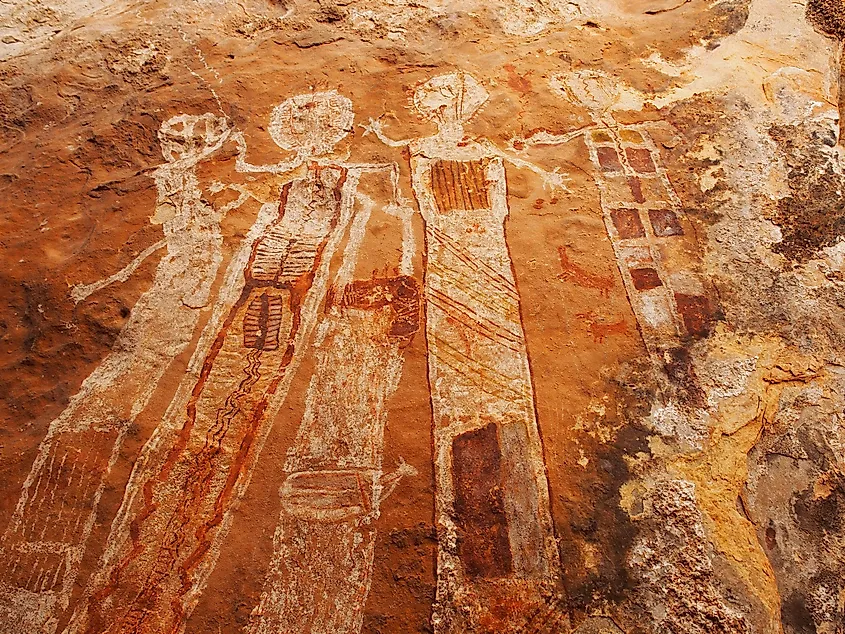
Archaeological excavations of the Grand Canyon have revealed several ancient human artifacts that are approximately 12,000 years old and date to the Paleo-Indian period. Among these artifacts, various animal figurines and petroglyphs have been found in the caves and on the walls of the canyons. The area became widely known in the US after railroads and other infrastructures were developed for tourism. In 1893, the Grand Canyon Forest Reserve was established by US President Benjamin Harrison. On November 28, 1906, the Grand Canyon Game Preserve was created by US President Theodore Roosevelt. The Grand Canyon National Monument was established on January 11, 1908. US President Woodrow Wilson signed the Grand Canyon National Park Act paving way for the establishment of the Grand Canyon National Park on February 26, 1919. In 1979, the Grand Canyon National Park was designated as a UNESCO World Heritage Site. The National Park celebrated its 100th anniversary on February 26, 2019.
